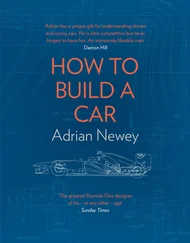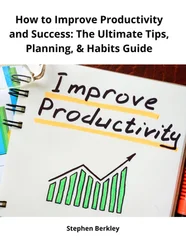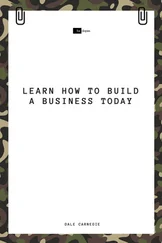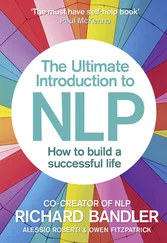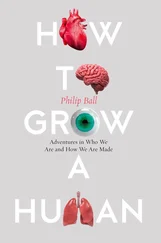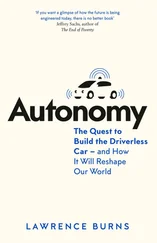Eyal, Nir - Hooked - How to Build Habit-Forming Products
Здесь есть возможность читать онлайн «Eyal, Nir - Hooked - How to Build Habit-Forming Products» весь текст электронной книги совершенно бесплатно (целиком полную версию без сокращений). В некоторых случаях можно слушать аудио, скачать через торрент в формате fb2 и присутствует краткое содержание. Год выпуска: 2014, Издательство: Nir Eyal, Жанр: Старинная литература, на английском языке. Описание произведения, (предисловие) а так же отзывы посетителей доступны на портале библиотеки ЛибКат.
- Название:Hooked: How to Build Habit-Forming Products
- Автор:
- Издательство:Nir Eyal
- Жанр:
- Год:2014
- ISBN:нет данных
- Рейтинг книги:5 / 5. Голосов: 1
-
Избранное:Добавить в избранное
- Отзывы:
-
Ваша оценка:
- 100
- 1
- 2
- 3
- 4
- 5
Hooked: How to Build Habit-Forming Products: краткое содержание, описание и аннотация
Предлагаем к чтению аннотацию, описание, краткое содержание или предисловие (зависит от того, что написал сам автор книги «Hooked: How to Build Habit-Forming Products»). Если вы не нашли необходимую информацию о книге — напишите в комментариях, мы постараемся отыскать её.
Hooked: How to Build Habit-Forming Products — читать онлайн бесплатно полную книгу (весь текст) целиком
Ниже представлен текст книги, разбитый по страницам. Система сохранения места последней прочитанной страницы, позволяет с удобством читать онлайн бесплатно книгу «Hooked: How to Build Habit-Forming Products», без необходимости каждый раз заново искать на чём Вы остановились. Поставьте закладку, и сможете в любой момент перейти на страницу, на которой закончили чтение.
Интервал:
Закладка:
***
Building the Mind Monopoly
While user habits are a boon to companies fortunate enough to engender them, their existence inherently makes success less likely for new innovations and startups trying to disrupt the status quo . The fact is, successfully changing long-term user habits is exceptionally rare.
Altering behavior requires not only an understanding of how to persuade people to act — for example, the first time they land on a webpage — but also necessitates getting them to repeat behaviors for long periods, ideally for the rest of their lives.
Companies that succeed in building a habit-forming business are often associated with game-changing, wildly successful innovation. But like any discipline, habit design has rules and caveats that define and explain why some products change lives while others do not.
For one, new behaviors have a short half-life, as our minds tend to revert to our old ways of thinking and doing. Experiments show that lab animals habituated to new behaviors tend to regress to their first learned behaviors over time. [xxviii]To borrow a term from accounting, behaviors are LIFO — “last in, first out.” In other words, the habits you’ve most recently acquired are also the ones most likely to go soonest.
This helps explain the overwhelming evidence that people rarely change their habits for long. Two-thirds of alcoholics who complete a rehabilitation program will pick up the bottle, and their old habits, within a year’s time. [xxix]Research shows that nearly everyone who loses weight on a diet gains back the pounds within two years. [xxx]
The enemy of forming new habits is past behaviors, and research suggests that old habits die hard. Even when we change our routines, neural pathways remain etched in our brains, ready to be reactivated when we lose focus. [xxxi]This presents an especially difficult challenge for product designers trying to create new lines or businesses based on forming new habits.
For new behaviors to really take hold, they must occur often. In a recent study at the University College London, researchers followed participants as they attempted to form a habit of flossing their teeth. [xxxii]As one of its findings, the study concluded that the more frequently the new behavior occurred, the stronger the habit became. Like flossing, frequent engagement with a product — especially over a short period of time — increases the likelihood of forming new routines.
Google Search provides an example of a service built upon a frequent behavior that helped create users’ habits. If you’re skeptical that Google is habit-forming (and you are a frequent Google user), just try using Bing. In a head-to-head comparison of the efficacy of an incognito search, the products are nearly identical. [xxxiii]Even if the geniuses at Google have in fact perfected a faster algorithm, the time saved is imperceptible to everyone but robots and Mister Spock. Milliseconds matter, but they don’t hook users.
So why haven’t more Google users switched to Bing? Habits keep users loyal. If a user is familiar with the Google interface, switching to Bing requires cognitive effort. Although many aspects of Bing are similar to Google, even a slight change in pixel placement forces the would-be user to learn a new way of interacting with the site. Adapting to the differences in the Bing interface is what actually slows down regular Google users and makes Bing feel inferior, not the technology itself.
Internet searches occur so frequently that Google is able to cement itself as the one and only solution in the habituated user’s mind. Users no longer need to think about whether or not to use Google, they just do. Furthermore, whenever the company can identify the user through tracking technology, it improves search results based on past behaviors to deliver a more accurate and personalized experience, reinforcing the user’s connection with the search engine. The more the product is used, the better the algorithm gets and thus, the more it is used. The result is a virtuous cycle of habit-driven behavior resulting in Google’s market domination. [xxxiv]
Habit as Strategy
Sometimes a behavior does not occur as frequently as flossing or Googling, but it still becomes a habit. For an infrequent action to become a habit, the user must perceive a high degree of utility, either from gaining pleasure or avoiding pain.
Take Amazon as an example: The e-tailer has its sights set on becoming the world’s one-stop shop. Amazon is so confident in its ability to form user habits that it sells and runs ads for directly competitive products on its site. [xxxv]Customers often see the item they are about to buy listed at a cheaper price and can click away to transact elsewhere. To some, this sounds like a formula for disaster. But to Amazon, it is a shrewd business strategy.
Not only does Amazon make money from the ads it runs from competing businesses, but it also utilizes other companies’ marketing dollars to form a habit in the shopper’s mind. Amazon seeks to become the solution to a frequently occurring pain-point — the customer’s desire to find the items they want.
By addressing shoppers’ price concerns, Amazon earns loyalty even if it doesn’t make the sale, and comes across as trustworthy in the process. The tactic is backed by a 2003 study, which demonstrated that consumers’ preference for an online retailer increases when they are offered competitive price information. [xxxvi]The technique has also been used by Progressive, the car insurance company, to drive over $15 billion of annual insurance sales, up from just $3.4 billion before the tactic was implemented.
By allowing users to comparison shop from within the site, Amazon provides tremendous perceived utility to its customers. Although shopping on Amazon may not occur as frequently as searching on Google, the company solidifies its place as the default solution to customers’ purchasing needs with each successful transaction. In fact, people are so comfortable comparison shopping on Amazon that they frequently use the company’s mobile app to check prices when standing in the aisles of real stores — often making a purchase from inside a competing retailer. [xxxvii]
In the Habit Zone
A company can begin to determine its product’s habit-forming potential by plotting two factors: frequency (how often the behavior occurs) and perceived utility (how useful and rewarding the behavior is in the user’s mind over alternative solutions).
Googling occurs multiple times per day, but any particular search is negligibly better than rival services like Bing. Conversely, using Amazon may be a less frequent occurrence, but users receive great value knowing they’ll find whatever they need at the one and only “everything store.” [xxxviii]
As represented in figure 1, a behavior that occurs with enough frequency and perceived utility enters the Habit Zone , helping to make it a default behavior. If either of these factors falls short and the behavior lies below the threshold, it is less likely that the desired behavior will become a habit.
Note that the line slopes downward but never quite reaches the perceived utility axis. Some behaviors never become habits because they do not occur frequently enough. No matter how much utility is involved, infrequent behaviors remain conscious actions and never create the automatic response that is characteristic of habits. On the other axis however, even a behavior which provides minimal perceived benefit can become a habit simply because it occurs frequently.

Figure 1
Читать дальшеИнтервал:
Закладка:
Похожие книги на «Hooked: How to Build Habit-Forming Products»
Представляем Вашему вниманию похожие книги на «Hooked: How to Build Habit-Forming Products» списком для выбора. Мы отобрали схожую по названию и смыслу литературу в надежде предоставить читателям больше вариантов отыскать новые, интересные, ещё непрочитанные произведения.
Обсуждение, отзывы о книге «Hooked: How to Build Habit-Forming Products» и просто собственные мнения читателей. Оставьте ваши комментарии, напишите, что Вы думаете о произведении, его смысле или главных героях. Укажите что конкретно понравилось, а что нет, и почему Вы так считаете.


